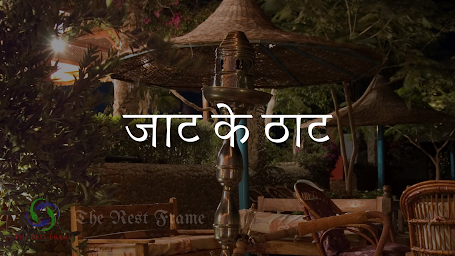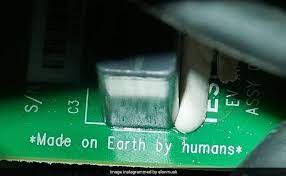War Of Lanka | Amish Tripathi | Book Reveiw
Being a Physicist, I am not going to tell my grandkids that a monkey flew over a sea to convey a message, a bridge was made over the ocean using floating stones, or an arrow sprayed fire when shot. They will laugh me off. I need to be more logical while inspiring them to do good deeds. Amish has already solved this program by writing an aspiring series of books called the Ramchandra Series.
I read the first book of this series when I was in 11th class. My Physics teacher gifted me the book: Raam: Scion of Ikshvaku. I remember it was Sunday, and my roommate and I leaned into the book before we finished it in one sitting. I read the second and third books in 2020 in lockdown. When I knew the new book was out, I ordered it through my friend. I had planned to read it on Diwali, but I was reading another book, so it got delayed. I read it during my examination leave.
As the title suggests, War of Lanka is about the great War between Lord Ram and Raavan. As I have already read the Shiva Trilogy, I know how brilliantly Amish describes battles. So I was expecting another packed thriller. And he didn't disappoint me.
Element wise analysis
Plot:
The plot of this book is inherited from the great legend of Ramayana. But the events fold very differently from the tale. To his point, the story is more or less the same as the legend, but I am sure he is cooking up some great plot which will be revealed in the next book.
Environment:
As always, Amish did a great job setting up the environment. Amish points out every big and small detail we should know about the environment. His drawing out the details of Ashok Vatika, the secret tunnels, and the Ayodhya ships is magnificent. The details are so transparent that you have no difficulty imagining the environment.
Characters
Some characters are directly taken from the Valmiki Ramayana, while others are imaginary. There are all kinds of characters, from funny as Naarad to severe as Bharat, from angry as Laxman to calm as Ram. The author has used all the characters brilliantly. Every character has significance, and none looks wasted. Although the story revolves around a few characters, such as Ram, Raavan, Sita, etc..., the side characters have done their job very well. In addition to being consistent in their characteristics, the characters keep the story bound.
The character of Ram is superbly maintained. The author describes him as a great Vishnu and a loving husband. It has the best consistency. He never breaks down in any situation; he always remains calm and composed, even in War. For a moment, I thought he was too much on Vishnu's side than a loving husband's side, but little moments such as conversations with Bharat made it balanced and beautiful.
Dialogues
As always, the dialogues are clear, informative, and conversation-styled. Talks vary from short conversations to long informative discussions. One funny thing is that the author thinks they used English in conversations. There are points when a character points out literally- "Hey, I don't understand that English word." He has referenced Samskrit quotes and explained their meaning in English. There are even quotes from western thinkers who came much after Ramayana. And it's even funnier that they fit perfectly into the situation.
Moral
Just like a typical mythical story, the moral of this story is also very clear: Follow the path of dharma. And then, the author defines the path of dharma throughout the book. We should treat everyone with respect, even our enemies. We should not take benefit of the enemy's ill condition; if we win, we will win fair and square.
Good Things
I found many good things in this book, and I will list them.
We will start with the simplicity of the language. There are only a few complex sentences or advanced vocab that you need to look up. You can read the book in one flow without interruptions. Anyone who has basic knowledge of English can read this book without a bit of difficulty. I suggest this book to people who want to learn English. But even this simple language can make you jump in your seat and say things like- "Shhh.. this is good writing.
People say bad things about the book, indicating that it doesn't match with legendary Ramayana. Well! If Amish directly translates the Valmiki Ramayana without his personal touch, only a few people will read it because they already know the story. The author's unique imagination and deep thinking make this book beautiful.
I would dare to say that Amish fixes the illogical things in the legendary Ramayana. People don't have superhuman powers in Amish's version of the legend; they are humans just like you can, which makes the tale more believable. There are no magical arrows that rain fire. Humans are not capable of flying over an ocean; they never were. So, in the book, Hanuman sailed to the island of Lanka with a team of soldiers.
Let's take the bridge over the sea: The Ram Setu. There is nothing logical in the fact that stones float in the water. I won't say that bridge-making over the ocean is scientifically accurate, but it is portrayed as a work of engineering rather than a miracle. The science of the bridge is convincing.
The most intelligent modification occurs when Indrajeet hurts Laxman, and they need Sanjeevani herbs to cure him. They had control over the War, so they used Pushpak Vimaan to bring the herbs. Lord Hanuman didn't fly to the Himalayas and get the whole mountain in his hand. It was the wow moment of the battle.
One thing is clear after reading the book. The author has researched Biology, Geography, and Physics. Which, once again, makes the book more sensible than the legendary Ramayana. In fights, he has described the functioning of our body in detail to describe how the warrior died. The names of the body parts, bones, muscles, and glands are accurate.
Similarly, he has studied the Physics of projectiles, so he knows the factors affecting the arrow's range. His knowledge of Geography is also reflected in the book. The course of rivers, the location of planes, mountains, the tides, and the cycle of seasons on the island of Lanka are beautifully described. It takes much research to make the magical tale real.
I enjoyed the philosophical discussions between the various characters. The author has beautifully decorated the discussions with abstract intellectual ideas. The first discussion between Sita and Raavan in the Ashok Vatika is about how emotions affect a person's actions. My favorite discussions were the conversation between Vashishta, Vishvamitra, and Nandini about how the political system should be. The conversation between Indrajeet and Mandodari is also one of my favorite things in the book.
The idea of Women's Empowerment is also supported soundly throughout the book. There are both male and female soldiers in the army, and they even hold important positions. For example, there is a character of brigadier Samichi. Open support for Feminism is seen in the argument between Hanuman and Sursa on the mission of Lanka. Which literally says that Women don't need to be protected; they can defend themselves. Sita, being a Vishnu, is also an example of respect for women. It is not new for this book. Amish, all books show immense respect for women.
I don't need to mention how brilliantly Amish writes about War explicitly. I don't know if he has read these war tactics somewhere or if he makes them on the way. But he is a genius in war strategies. Some of the moves are so clever that I am in amusement. He brilliantly handles the challenges and requirements of a military general. The idea of using war elephants was one of the best I have ever read. It ended the War in one go. I am still in amazement.
Bad Things:
Nothing is perfect; there are dark spots even on the moon. There are some things about this book that I didn't like. That won't affect my affection for this book; I still believe it is a masterpiece. But to write an honest review, I need to list them out.
There are some inconsistencies with the characters. After reading the book, I still can't decide whether to call Raavan a good or bad person. His actions shout that he is a monster. But in this book, the author somehow tries to justify his efforts for the greater good of India. He clearly states that he is doing this for the greater good of India. There is also a hint that Raavan is not the main villain but a pawn in the game. The same is true for Kumbhakarna and Indrajeet. Indrajeet may be a great warrior, but he is fighting for the wrong side.
One thing I don't like about the book is that everyone seems telepathic. Everyone knows what is coming next without explicitly mentioning the thing. I know that people are genius, but this is too good to be true. Brothers know each other so well they can guess what the person is thinking.
This incredible telepathic ability creates a funny situation in the War. Both parties can precisely guess the strategy of the enemy. Ram knows that Indrajeet's plan will be the next day; Indrajeet knows that Ram knows about his plans, and the cycle goes on.
There are some minor plotholes in the story. Vibhishan explicitly mentioned that there are no tunnels in the fort of Lanka, but Lord Akampanna meets them via a tunnel.
A ridiculous thing I noticed was the corp of wheat in the month of Ashwin. I am the son of a farmer, so I have more than enough practical knowledge on this topic. Wheat is a Rabi crop, and the crops harvested in monsoon are called Kharif crops. The corp of wheat is sawn in the winter and cut when summer starts. Wheat needs a cold environment, and low temperatures are in the initial stages and scorching sun before harvesting. It is impossible to harvest the crop in the monsoon season for two reasons. The wheat crop requires a certain length of day to hardening of the seed. If there is too much fluctuation in temperature, the seed won't take shape. Secondly, too much water is terrible for wheat. So it is not possible to grow in monsoon.
I have strong opinions about Sita being a Vishnu. Besides the feminist argument, I think there isn't much sense in Sita as Vishnu. Ram should be the only Vishnu, but I like how it's going.
Conclusion:
I would give this book five out of five stars because I loved reading the book. I had an exam on 11th November. I didn't prepare for the exam in one day gap, and I read this book. Right after completing the exam, I went to the library to finish this book. I was in a state of flow while reading this book. Time passed smoothly without my notice. I was lost entirely in the book. And indeed, We only pay for the experience of the service, and this book succeeded in providing me with that.
I am so excited about the fifth and final book of this series, where he will tell the story of the rise of Meluha. Also, we will know what went wrong between Vishwamitra and Vashistha.



Comments
Post a Comment